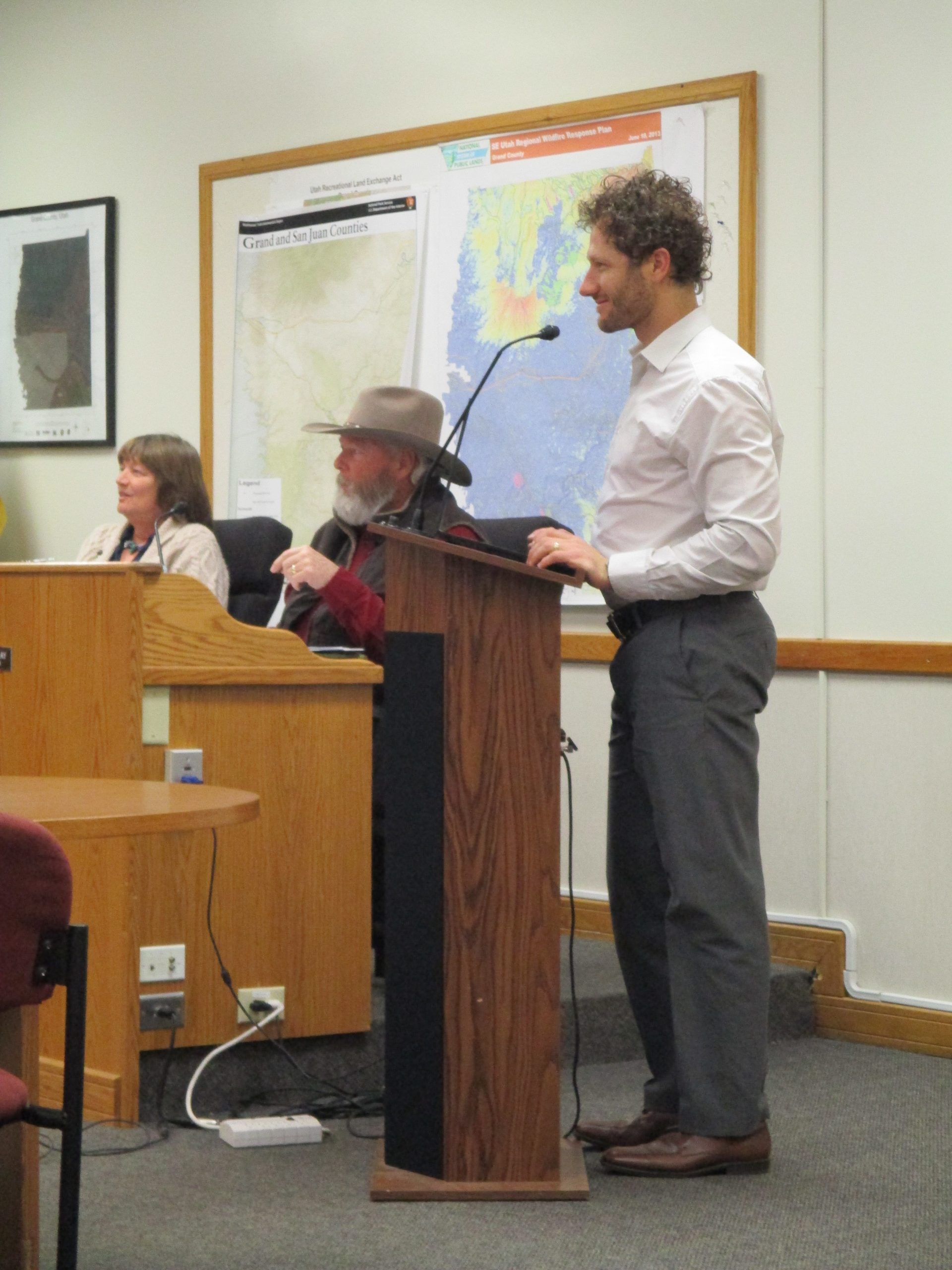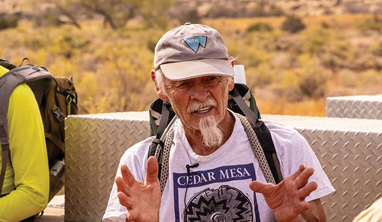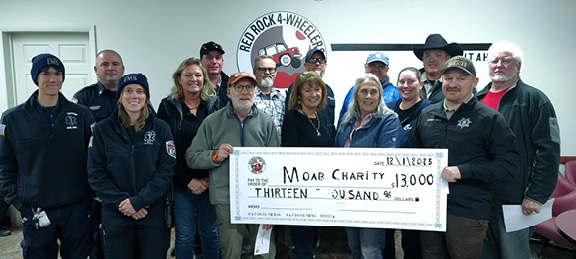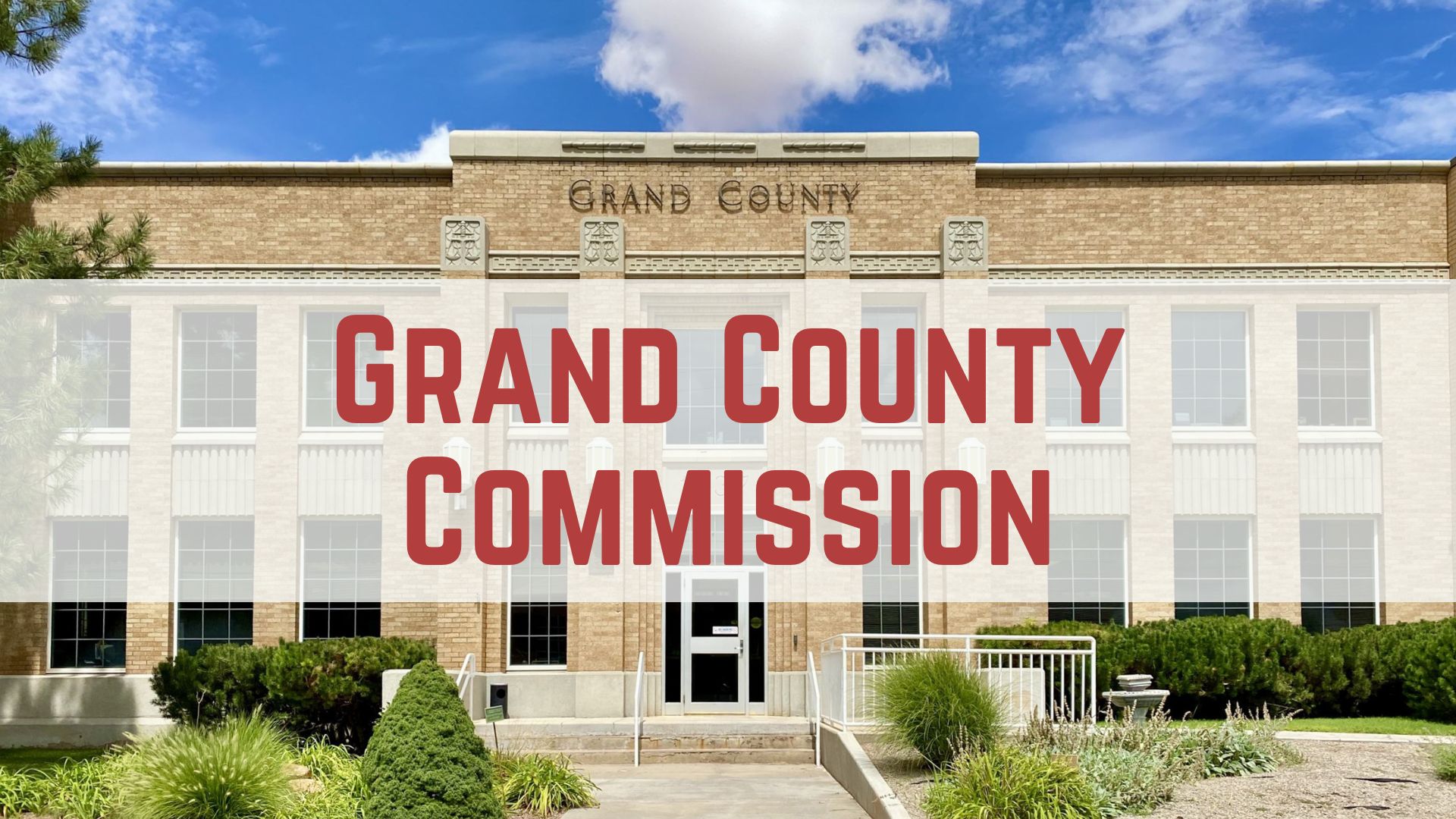Some information may be outdated.
On Jan. 7, the Grand County Council voted to approve a long-debated ordinance outlining development standards for new overnight accommodations after more than a year of discussion. They also heard a presentation on the 2020 census and discussed 2020 elections.
A look at the County’s new development standards
According to the new code, areas where new overnight lodging may be allowed will be determined using ‘overlay zones,’ designed with consideration of the historical uses in an area, its accessibility and the character of neighboring areas. Developers must go through an application process to build new overnight lodging in these zones, and the new standards include guidance for the council on how to decide whether to approve or deny applications.
The applicant must include a project analysis that weighs the projected public benefits of their proposed project, such as job creation or contributions to civic and open space, against the expected negative impacts, such as traffic congestion, increased crowding in the national parks and demands on water resources.
The council agreed that they want to maintain a consistent ratio of overnight accommodations to primary residences in the county, aiming for 1.4 overnight units for every one residential unit. This ratio is a “soft cap”—the council retains discretion to approve or deny applications with this ratio in mind.
“I think the ratio is good to get on the books now,” said Councilmember Jaylyn Hawks during a workshop discussing the code prior to the council meeting. “I do realize that things might change from time to time. But it helps. In addition to all of the other criteria we will be considering when a new application comes in, this is a pretty objective piece of information that we don’t have to be using too much guesswork.”
If a development project is approved, the plan must adhere to design standards governing energy, water use, transportation, areas of mixed use including diverse uses and open space, height and size restrictions, site configuration and building appearance.
In the area of energy, new developments must produce 80% of their energy requirements onsite, in accordance with a resolution the county passed in 2019 that makes a goal of 100% renewable energy by 2030.
In regards to water conservation, the “largest feasible” rainwater catchment system is required, and that water is to be used on site for irrigation or other appropriate uses. New developments must also install greywater systems to reuse water from shared shower or laundry facilities. Landscaping must be low-water use and drought-resistant.
New developments have to abide by new guidance on transportation accessibility, allowing for a transit stop, providing covered bicycle storage, and, when indicated by the Grand County Non-motorized Trails Master Plan, allowing easements for public trails.
New accommodations are limited in height by viewshed analyses, and limited in size to a 15,000 square foot building and thirty-five bedrooms. Under the code, an entire project’s size is limited to 50,000 square feet. Developers may not undertake mass grading on their building site, but must fit their design to existing terrain with their entrances facing the fronting roadway.
The aesthetics of new buildings were also considered, with parameters limiting the percentage of wall space that may be windowless, hiding or screening mechanical equipment like air conditioning units, and banning plastic or vinyl awnings all written in to the county’s code.
Few final alterations to the existing draft of the ordinance were made during the workshop, and most were made to clarify the legislative intent of the council or make the document easier to understand.
One significant point that was determined in the workshop involves the energy requirement for RV campgrounds. At least one RV park owner has, in previous meetings and discussions, requested that campgrounds be exempted from the 80% standard, and instead be allowed to produce a smaller amount of power onsite and/or purchase renewable energy credits rather than producing their own. As passed, the final ordinance says that buildings owned or managed by the RV campground owner must adhere to the 80% requirement, but releases them from responsibility for energy used by campers.
Other points of clarification included:
Developments may be built up to the height that is allowed in the underlying zone where they are located, provided that the viewshed analysis allows it.
RV campgrounds are limited to sixty spaces, regardless of whether those hold cabins or RV pads.
Developers will not have to make 60% of the wall that faces the street on the ground floor be windows, as was previously required, because planners pointed out that this standard was not compatible with energy efficiency goals.
Any RV campground, hotel, motel or dwelling rented for time periods less than thirty days will require a land use permit and a business license.
Heading into the U.S. Census
At the meeting, DeAnn Zebelean from the United States Census Bureau gave a presentation on the United States 2020 Census and how the procedure will work in Grand County. The United States Constitution requires that available housing units and residents are counted every ten years. The results of the census determine important decisions including how representation is weighted in Congress, how voting districts are drawn in local governments and how federal funding is distributed.
Zebelean enumerated a long list of projects and programs that federal funding could cover in Grand County, including highway and infrastructure projects, affordable housing grants, community development grants, health care programs, water systems and waste disposal systems.
“Education, of course, is very big,” she said. “The school districts rely very heavily on federal funding for Title 1 funding, special education, nutritional programs at schools and stuff like that.”
Zebelean said that according to calculations made by the State of Utah, which were based on a study conducted by George Washington University, each person counted by the Census Bureau brings a value of $1,870 to the state each year.
Grand County has several demographics that are difficult to count – primarily the high number of seasonal workers who may not be associated with a street address. Zebelean said the Census is keeping in touch with businesses that employ these types of workers and they will be counted as part of the region’s population based on employment records.
Other challenging populations to accurately survey include people with language barriers, children under five and people in very rural or isolated areas. During the last census in 2010, Zebelean said that about 31% of the population did not self-respond to the census in Grand County. This time around, with a local “complete count committee” and a $25,000 grant secured from the state to assist with the census count, Zebelean hopes that the response rate will be above 90%.
In addition to emphasizing the importance of the census, Zebelean assured the council and the public that it is simple and safe. The questionnaire has only nine questions, and can be completed online. No census employee or questionnaire will ask for money, bank account numbers, or social security numbers and all information is kept strictly confidential.
“We take data very seriously at the Census Bureau,” said Zebelean. “Each employee takes a lifetime oath, not just while we’re employees at the Census Bureau, but for a lifetime. If we breach any data we automatically spend five years in federal prison and we pay $250,000 in a fine.”
2020 Elections
County Clerk/Auditor Chris Baird reminded the council and the public of important dates related to upcoming elections.
“It’s a big year,” Baird said.
There are five county council seats up for election this fall, currently occupied by councilmembers Greg Halliday, Rory Paxman, Evan Clapper, Curtis Wells and one that was vacated mid-term with Terry Morse’s resignation. That seat is temporarily filled by appointee Gabriel Woytek.
If a member of the public wants to run for a seat on the County Council, they must file an intent to gather signatures with the clerk’s office by March 19. Other positions up for election are county surveyor, treasurer and a clerk/auditor to replace Baird when he becomes the new county administrator.
2020 is also a presidential election year. Baird noted that Democratic and Republican primary races are open to those officially unaffiliated with a party. Any voter may request a ballot from the Clerk’s Office to vote in those primaries.
“In order to receive a Republican ballot, you do need to affiliate as Republican,” Baird noted, “but anyone, even Republicans, if they wanted, can vote in the Democrat presidential primary.”
Request forms for a primary ballot must be received by the clerk’s office by Jan. 15.
“We take data very seriously at the Census Bureau.”
– DeAnn Zebelean
Council looks ahead to census
Appreciate the coverage? Help keep local news alive.
Chip in to support the Moab Sun News.





